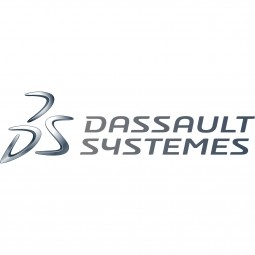DS PLM SUCCESS STORY - Arburg: Facilitating collaboration and reducing costs with CATIA, ENOVIA, and 3DVIA Composer

Customer Company Size
Large Corporate
Region
- Europe
Country
- Germany
Product
- CATIA
- ENOVIA
- 3DVIA Composer
Tech Stack
- PLM Software
- CAD/CAM
- 3D Visualization
Implementation Scale
- Enterprise-wide Deployment
Impact Metrics
- Productivity Improvements
- Cost Savings
- Innovation Output
Technology Category
- Functional Applications - Product Lifecycle Management Systems (PLM)
- Functional Applications - Product Data Management Systems
Applicable Industries
- Equipment & Machinery
Applicable Functions
- Product Research & Development
- Discrete Manufacturing
Use Cases
- Manufacturing System Automation
- Digital Twin
- Virtual Prototyping & Product Testing
Services
- Software Design & Engineering Services
- System Integration
About The Customer
Arburg is one of the world’s leading manufacturers of injection molding machines. The machine and plant manufacturer, located in Lossburg, in the Black Forest region, employs over 2000 people. Arburg’s product portfolio includes Allrounder injection molding machines with clamping force from 125 to 5,000 kilonewtons (kN), Multilift robotic systems, complex automation solutions and a range of peripherals. Arburg chose Dassault Systèmes solutions 15 years ago and today relies on CATIA, ENOVIA, and 3DVIA Composer for its product development needs.
The Challenge
Arburg, a leading manufacturer of injection molding machines, faced the challenge of bringing its products to market faster, while increasing quality and lowering costs. The company's product range and the modular design of its machines placed high demands on IT services. Under the motto “securing the future with process optimization using standard IT solutions”, Arburg's CIO and his IT team worked closely with the operations departments to radically rethink the company’s IT infrastructure. The goal was to build a process-oriented IT infrastructure with virtual product management to improve time to market and increase development-to-delivery speed two-fold.
The Solution
Arburg deployed a unified PLM strategy based on CATIA, ENOVIA and 3DVIA Composer for virtual product design, collaboration and technical documentation creation. From the very first development step, Arburg engineers use CATIA to construct their machines virtually. The system stores every revision precisely. The interfaces between CAD/CAM information and the procurement and ordering system ensure a 3D view of every Arburg-developed component. In addition, designers and design engineers can simulate all production steps, from design to final machine, and display a 360-degree view of their models. ENOVIA compiles the information so that anyone in the company involved in a particular project can use the same resource and process data and communicate in 3D. For technical documentation, Arburg uses 3DVIA Composer to generate the technical documentation directly from the CATIA files.
Operational Impact
Quantitative Benefit

Case Study missing?
Start adding your own!
Register with your work email and create a new case study profile for your business.
Related Case Studies.

Case Study
Smart Water Filtration Systems
Before working with Ayla Networks, Ozner was already using cloud connectivity to identify and solve water-filtration system malfunctions as well as to monitor filter cartridges for replacements.But, in June 2015, Ozner executives talked with Ayla about how the company might further improve its water systems with IoT technology. They liked what they heard from Ayla, but the executives needed to be sure that Ayla’s Agile IoT Platform provided the security and reliability Ozner required.

Case Study
IoT enabled Fleet Management with MindSphere
In view of growing competition, Gämmerler had a strong need to remain competitive via process optimization, reliability and gentle handling of printed products, even at highest press speeds. In addition, a digitalization initiative also included developing a key differentiation via data-driven services offers.

Case Study
Predictive Maintenance for Industrial Chillers
For global leaders in the industrial chiller manufacturing, reliability of the entire production process is of the utmost importance. Chillers are refrigeration systems that produce ice water to provide cooling for a process or industrial application. One of those leaders sought a way to respond to asset performance issues, even before they occur. The intelligence to guarantee maximum reliability of cooling devices is embedded (pre-alarming). A pre-alarming phase means that the cooling device still works, but symptoms may appear, telling manufacturers that a failure is likely to occur in the near future. Chillers who are not internet connected at that moment, provide little insight in this pre-alarming phase.

Case Study
Premium Appliance Producer Innovates with Internet of Everything
Sub-Zero faced the largest product launch in the company’s history:It wanted to launch 60 new products as scheduled while simultaneously opening a new “greenfield” production facility, yet still adhering to stringent quality requirements and manage issues from new supply-chain partners. A the same time, it wanted to increase staff productivity time and collaboration while reducing travel and costs.

Case Study
Integration of PLC with IoT for Bosch Rexroth
The application arises from the need to monitor and anticipate the problems of one or more machines managed by a PLC. These problems, often resulting from the accumulation over time of small discrepancies, require, when they occur, ex post technical operations maintenance.

Case Study
Data Gathering Solution for Joy Global
Joy Global's existing business processes required customers to work through an unstable legacy system to collect mass volumes of data. With inadequate processes and tools, field level analytics were not sufficient to properly inform business decisions.






